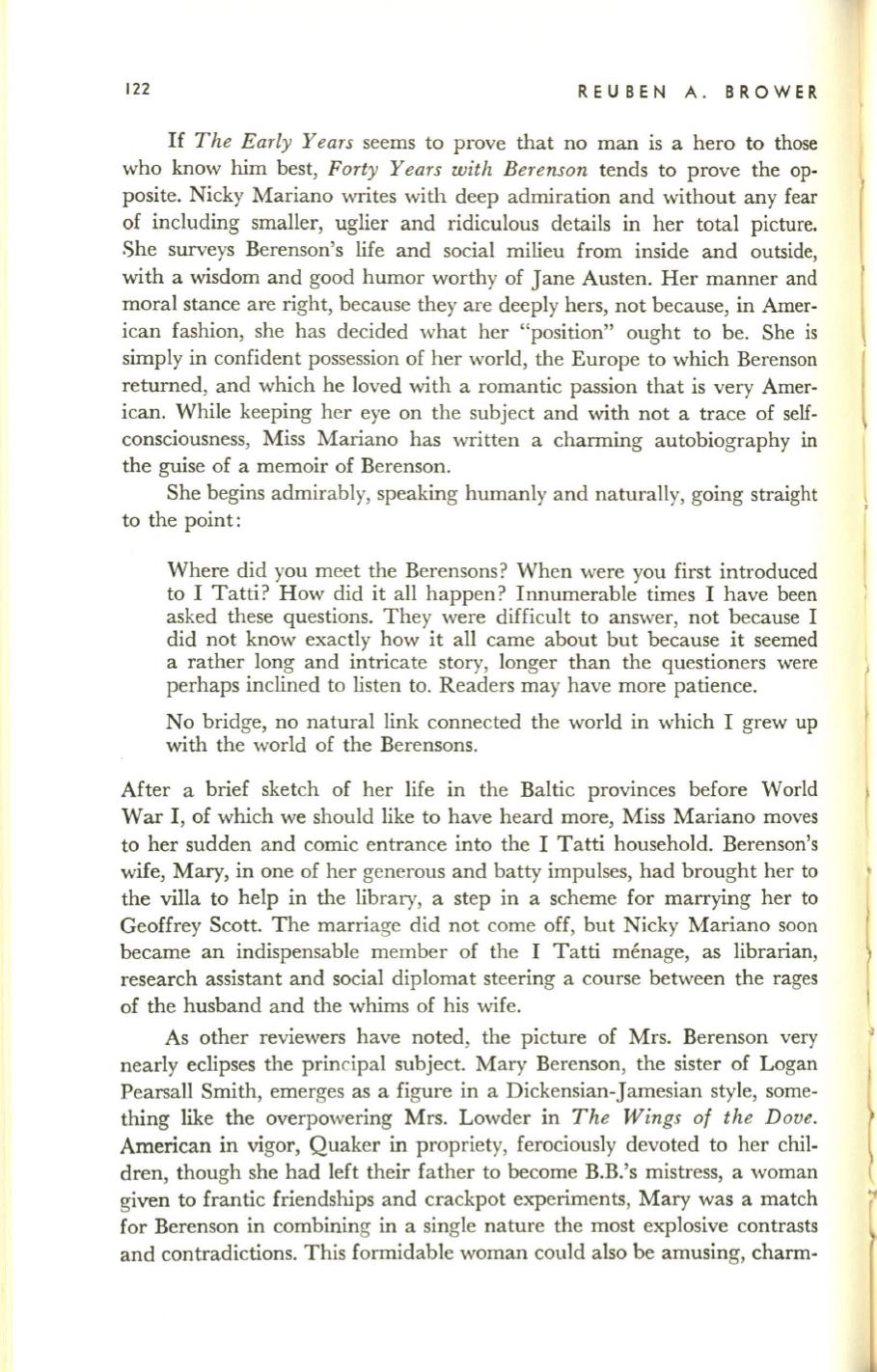
122
REUBEN A. BROWER
If
The Early Years
seems to prove that no man is a hero to those
who know him best,
Forty Years with Berenson
tends to prove the op–
posite. Nicky Mariano writes with deep admiration and without any fear
of including smaller, uglier and ridiculous details in her total picture.
8he surveys Berenson's life and social milieu from inside and outside,
with a wisdom and good humor worthy of Jane Austen. Her manner and
moral stance are right, because they are deeply hers, not because, in Amer–
ican fashion, she has decided what her "position" ought to be. She is
simply in confident possession of her world, the Europe to which Berenson
returned, and which he loved with a romantic passion that is very Amer–
ican. While keeping her eye on the subject and with not a trace of self–
consciousness, Miss Mariano has written a charming autobiography
in
the guise of a memoir of Berenson.
She begins admirably, speaking humanly and naturally, going straight
to the point:
Where did you meet the Berensons? When were you first introduced
to I Tatti? How did it all happen? Innumerable times I have been
asked these questions. They were difficult to answer, not because I
did not know exactly how it all came about but because it seemed
a rather long and intricate story, longer than the questioners were
perhaps inclined to listen to. Readers may have more patience.
No bridge, no natural link connected the world in which I grew up
with the world of the Berensons.
After a brief sketch of her life in the Baltic provinces before World
War I , of which we should like to have heard more, Miss Mariano moves
to her sudden and comic entrance into the I Tatti household. Berenson's
wife, Mary, in one of her generous and batty impulses, had brought her to
the villa to help in the library, a step in a scheme for marrying her to
Geoffrey Scott. The marriage did not come off, but Nicky Mariano soon
became an indispensable member of the I Tatti menage, as librarian,
research assistant and social diplomat steering a course between the rages
of the husband and the whims of his wife.
As other reviewers have noted, the picture of Mrs. Berenson very
nearly eclipses the principal subject. Mary Berenson, the sister of Logan
Pearsall Smith, emerges as a figure in a Dickensian-Jamesian style, some–
thing like the overpowering Mrs. Lowder in
The Wings of the Dove.
American in vigor, Quaker in propriety, ferociously devoted to her chil–
dren, though she had left their father to become B.B.'s mistress, a woman
given to frantic friendships and crackpot experiments, Mary was a match
for Berenson in combining in a single nature the most explosive contrasts
and contradictions. This formidable woman could also be amusing, charm-


